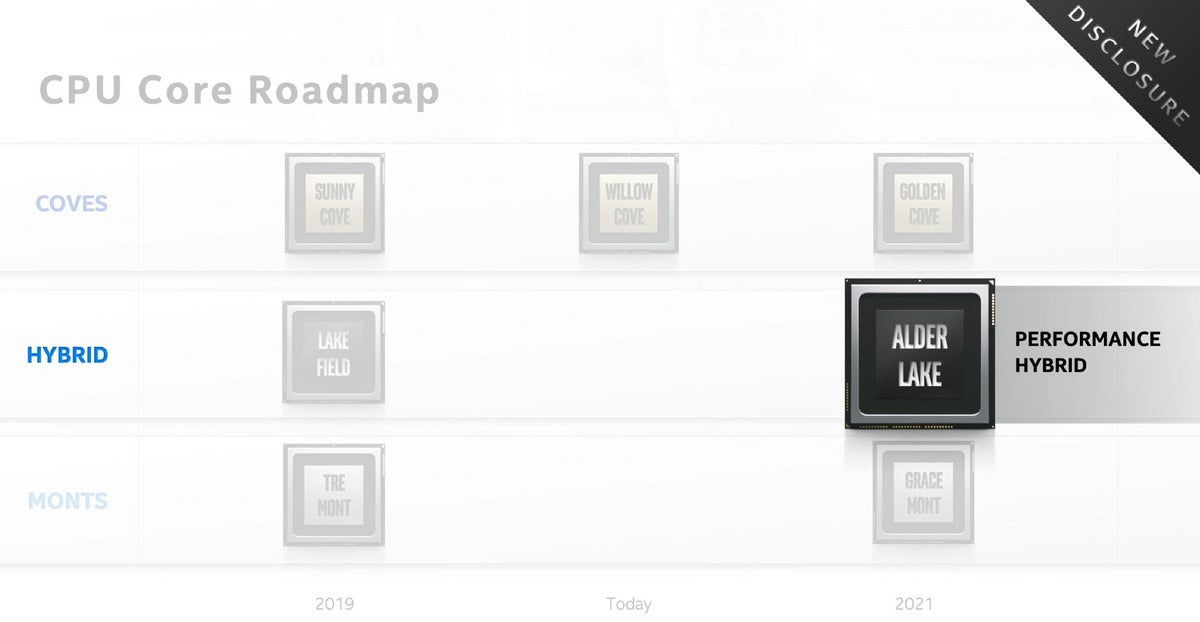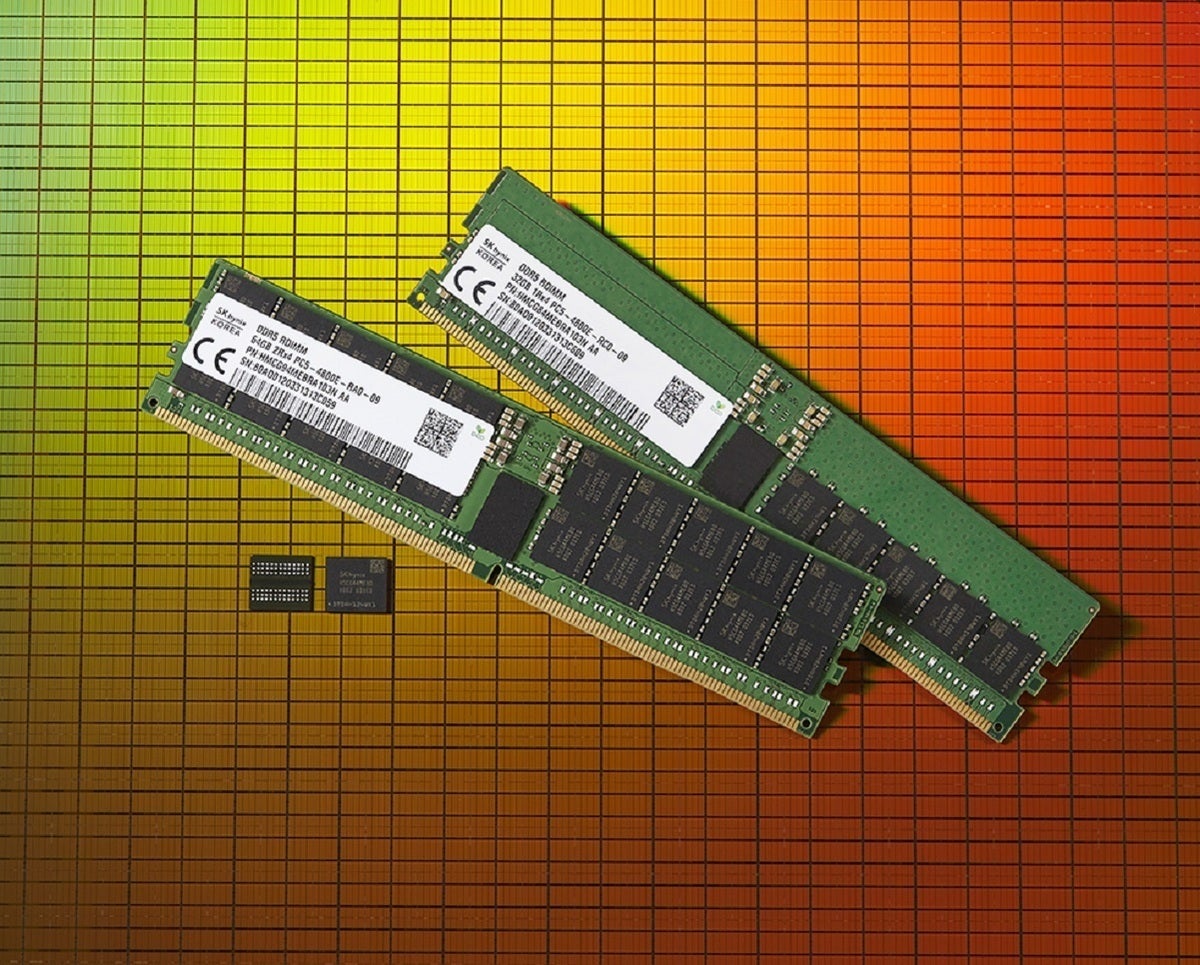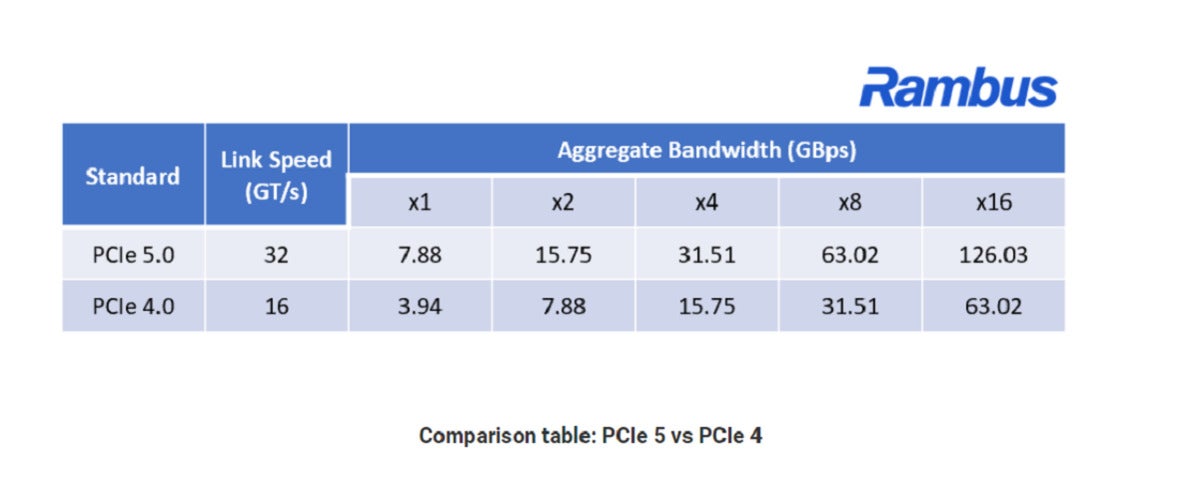[ad_1]
Even though Intel just announced its Rocket Lake-S desktop processor, eyes are already turning to what Intel has next up its sleeve: the next-generation CPU code-named Alder Lake, expected before the end of 2021. The latest Alder Lake leaks, provided by Videocardz, suggest that Alder Lake will represent a sharp break from existing Intel designs, for better or worse.
Last year, Intel confirmed that Alder Lake existed, and that it would ship in 2021. Originally, however, Alder Lake didn’t seem like that big of a deal. It’s built upon the same mixed-core design as Lakefield, which shipped in 2020 as the 9-watt Intel Core processor with Intel Hybrid Technology, inside the Samsung Galaxy Book S. Reviews called the Galaxy Book S performance anemic, and more of the same was expected from Alder Lake.
Now it looks like Alder Lake may be more interesting than we thought. Let’s look at the highlights of those leaks.
Substantially more performance
Over the weekend, VideoCardz said it had obtained a leaked Alder Lake presentation, which promises that Alder Lake will offer 20 percent more performance in single-threaded applications, and more than double the performance in multi-threaded workloads. In part, that’s because Alder Lake will be manufactured on a 10nm manufacturing node, Intel’s most advanced.
 Intel
IntelThe leaked presentation offers insufficient context for interpreting the performance claims. Videocardz suggested that Intel could be comparing Alder Lake against Rocket Lake, or Intel’s 11th-gen Tiger Lake parts. However, Intel could conceivably be comparing Alder Lake to the anemic Lakefield—in which case, the bar is set much lower.
Intel itself has indicated that Alder Lake is being designed with performance in mind. “We are advancing our hybrid architecture significantly with a focus on performance,” Raja Koduri, senior vice president, chief architect, and general manager of Architecture, Graphics, and Software said in August at Alder Lake’s official tip-off at the Intel Architecture Day.
Koduri said then that Alder Lake will combine an unknown number of performance-oriented Golden Cove CPU cores (similar to Lakefield’s Sunny Cove), with an equally unknown number of low-power Gracemont CPU cores (successor to Lakefield’s Tremont cores), with more emphasis on performance. If the VideoCardz presentation is accurate, Alder Lake will have eight of each.
The presentation also shows Alder Lake with Intel’s XeLP GPU inside, which Intel also talked about last year.
Note that while the presentation doesn’t specifically refer to both desktop and mobile parts, it specifically identifies Alder Lake-S, implying a desktop processor. Because Lakefield was a mobile chip, that probably means Alder Lake will be available for both laptop and desktop PCs.
DDR5 support is here
If the leaked VideoCardz presentation is accurate, Alder Lake will also be the first Intel chip with support for DDR5 memory. Intel has already made some interesting tweaks with Rocket Lake S, supporting a “Gear 1” and “Gear 2” timing in the DDR4 memory that Rocket Lake uses. (We describe what this means in our Rocket Lake FAQ.)
Specifically, the leaked presentation says that Alder Lake-S will support up to DDR5-4800 and DDR4-3200.
 SK Hynix
SK Hynix The first DDR5 memory module from SK Hynix.
DDR5 was first announced in 2017, designed to be double the density and double the speed of the DDR4 memory in use today. In reality, it appears that if you take DDR4 memory and DDR5 memory and run them both at an equivalent data rate of 3,200 megatransfers per second, DDR5 will actually deliver a performance increase on the order of 1.87 times that of DDR4, according to a Micron white paper (PDF).
 SK Hynix
SK Hynix Older DDR4 memory should still work. But to take advantage of Alder Lake’s full potential, you’ll probably need to invest in new DDR5 memory sticks. (SK Hynix announced its first DDR5 memory last year.) Unfortunately, the relative price and availability of DDR5 memory isn’t clear. Intel seems to be planning for scarcity, as only the high-end Z690 motherboard will support DDR5. Other, cheaper boards are being designed with DDR4 in mind, VideoCardz reports.
PCI Express 5 plans for the future
According to VideoCardz, Alder Lake will launch alongside the Intel 600-series chipsets. There, the most notable features will be the new DDR5 memory, and also the inclusion of x16 PCI Express 5.0 support and x4 PCI Express 4.0.
Wait—didn’t AMD and Intel recently introduce support for PCIe 4.0? Yes, they did—and from a GPU standpoint, nothing is really pushing the limits of PCIe 4.0 as yet.
 Rambus
Rambus PCI Express 5.0 (PCIe 5.0) looks further into the future. PCIe 5.0 allows for 32 Gigatransfers per second (GTps) versus the 16GTps permitted by PCI Express 4.0, with an aggregate x16 link bandwidth of almost 128 Gigabytes per second (GBps).
Originally, PCI Express 5.0 was designed for cloud-specific applications like Machine Learning (ML) and cloud computing. The standard will also have PC-specific applications, however—specifically, the bandwidth available for next-next-generation GPUs to run in conjunction with even faster SSDs that can hang off of the PCI Express bus.
Familiar I/O
According to the leaked Intel presentation, the Alder Lake-S platform will include the traditional connectivity options that Intel has offered for several generations. Intel will offer Thunderbolt 4 connections (which are USB4-compliant) alongside Wi-Fi 6E. It will even support Intel Optane H20 memory. But there’s a price to pay, too, and it’s…
A new, incompatible socket…and cooler
Ugh. Yes, this is the biggie. With Alder Lake, Intel is reportedly moving to a new LGA1700 socket, which will form the foundation for future processor generations, including the reported Alder Lake-S successor, known as the 13th-gen Core Raptor Lake-S.
VideoCardz further points out that because the shape of the socket has changed, the existing cooling solutions available for the current LGA1200 socket will be rendered “unfit,” a polite term, we assume, for incompatibility. AMD, on the other hand, has made socket consistency one of its selling points.
In short, if you want to invest properly in Alder Lake, you’ll need to buy the new Alder Lake processor, a new motherboard, and possibly new memory and even a new, faster SSD designed for the faster PCI Express 5.0 infrastructure. The only thing that will justify such a substantial investment will be a complementary increase in performance—which Intel is promising, at least on paper. We’ll have to wait and see if it’s all worthwhile.
[ad_2]
Source link